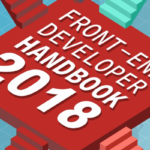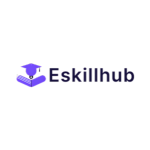Unlock the world of front-end development with the “Comprehensive Front-End Developer Guide.” This ebook serves as your ultimate companion, whether you’re a beginner or a seasoned developer, offering detailed insights into HTML, CSS, JavaScript, responsive design, frameworks like React, Angular, and Vue.js, and advanced topics such as performance optimization and accessibility. Packed with examples, best practices, and expert advice, this guide empowers you to build modern, scalable, and user-friendly web applications with confidence.
Comprehensive Front-End Developer Guide

Comprehensive Front-End Developer Guide
30.42 Credits
Comprehensive Front-End Developer Guide
30.42 CreditsVendor Information
- Store Name: EskillHub
- Vendor: EskillHub
-
Address:
167-169 Great Portland street
London
London
W1W 5PF - No ratings found yet!

Comprehensive Front-End Developer Guide
30.42 CreditsThe “Comprehensive Front-End Developer Guide” is your gateway to mastering the art and science of front-end web development. Designed to cater to readers across all levels of expertise, this ebook is an invaluable resource for anyone aiming to create engaging, efficient, and accessible web interfaces.
Chapter 1: The Foundations of Front-End Development
Every successful developer begins with a solid foundation. This chapter introduces you to the core building blocks of the web—HTML, CSS, and JavaScript. It explains how these technologies work together to form the backbone of every web page and application. Through clear explanations and real-world examples, you’ll learn how to structure content with HTML, style it beautifully with CSS, and add interactivity using JavaScript. The chapter also includes a detailed overview of browser compatibility and debugging tools to help you write error-free code from the start.
Chapter 2: Building Responsive and Accessible Designs
Modern users expect web applications to look and function perfectly on all devices, from smartphones to desktop monitors. This chapter delves into the principles of responsive web design, teaching you how to use media queries, fluid grids, and flexible images to create layouts that adapt seamlessly to various screen sizes. Additionally, accessibility is a key focus, guiding you on making your applications inclusive for users with disabilities. You’ll learn about ARIA roles, semantic HTML, and tools to test your website’s accessibility.
Chapter 3: The Power of JavaScript
JavaScript is the engine behind dynamic and interactive web applications. In this chapter, you’ll explore essential JavaScript concepts like the DOM, event handling, and asynchronous programming. Advanced topics such as ES6+ features, modular JavaScript, and working with APIs are also covered. Whether you’re creating a simple form validation script or building a complex single-page application, the knowledge in this chapter equips you with the skills to bring your ideas to life.
Chapter 4: Frameworks and Libraries
Front-end frameworks and libraries streamline development and enhance productivity. This chapter provides an in-depth look at popular tools like React, Angular, and Vue.js. You’ll understand their unique features, advantages, and use cases, helping you choose the right tool for your projects. Step-by-step tutorials guide you through setting up and creating components, managing state, and integrating APIs. By the end of this chapter, you’ll be ready to leverage these tools to build scalable and maintainable applications.
Chapter 5: Performance Optimization
Website performance can make or break user experience. This chapter teaches you how to identify and address bottlenecks in your applications. Topics include lazy loading, code splitting, image optimization, and minimizing render-blocking resources. You’ll also learn to use tools like Lighthouse and WebPageTest to measure and improve your website’s performance metrics. With these skills, you can ensure that your applications load quickly and run smoothly for all users.
Chapter 6: Modern Workflows and Tools
The front-end development landscape is constantly evolving, and staying updated with the latest tools and workflows is crucial. This chapter covers modern development tools like Webpack, Babel, and Vite, as well as version control systems like Git. You’ll also explore package managers, task runners, and linters that streamline your workflow. Detailed instructions help you set up a development environment tailored to your needs, enabling you to work more efficiently.
Chapter 7: Testing and Debugging
Testing and debugging are essential skills for every developer. This chapter introduces you to testing methodologies like unit testing, integration testing, and end-to-end testing. You’ll learn to use tools like Jest, Cypress, and Playwright to automate testing processes and ensure the quality of your applications. Additionally, advanced debugging techniques help you pinpoint and fix issues quickly, saving you valuable time during development.
Chapter 8: Deploying and Hosting
Once your application is complete, it’s time to share it with the world. This chapter walks you through the deployment process, covering options like static hosting, cloud platforms, and serverless solutions. You’ll also learn best practices for setting up continuous integration and continuous deployment (CI/CD) pipelines to automate your workflow. With this knowledge, you can deploy applications confidently and ensure they remain reliable in production.
Chapter 9: The Future of Front-End Development
The web development industry is fast-paced and ever-changing. This chapter explores emerging trends and technologies, such as WebAssembly, progressive web apps (PWAs), and machine learning integration. Insights from industry experts help you stay ahead of the curve and prepare for the future of front-end development.
Real-World Applications and Projects
Throughout the ebook, practical exercises and projects reinforce your learning. From creating a responsive portfolio website to building a full-fledged e-commerce application, these hands-on examples provide a clear path to mastering front-end development skills. Each project is accompanied by source code and detailed explanations, enabling you to practice and refine your abilities.
Why This Ebook?
Unlike other resources that focus narrowly on specific technologies, the “Comprehensive Front-End Developer Guide” takes a holistic approach. It covers every aspect of front-end development, from the basics to advanced concepts, empowering you to tackle any project with confidence. Whether you’re starting your journey or looking to enhance your existing skills, this guide is designed to be your go-to reference.
Conclusion
The “Comprehensive Front-End Developer Guide” is more than just an ebook—it’s a complete toolkit for building modern, accessible, and high-performing web applications. By following its guidance, you’ll gain the knowledge and expertise needed to succeed in the competitive world of web development. Don’t just learn front-end development—master it with this comprehensive guide.
















